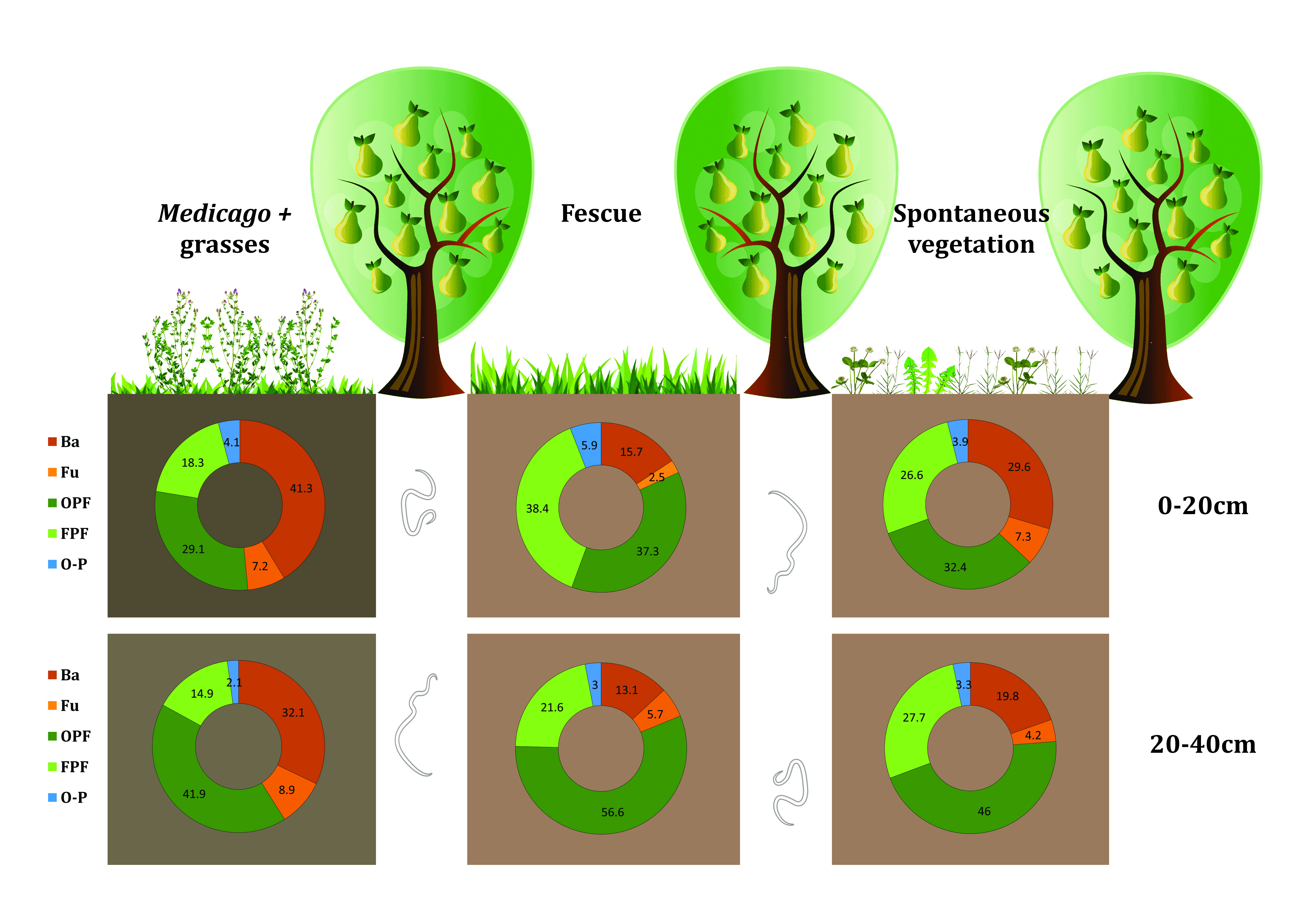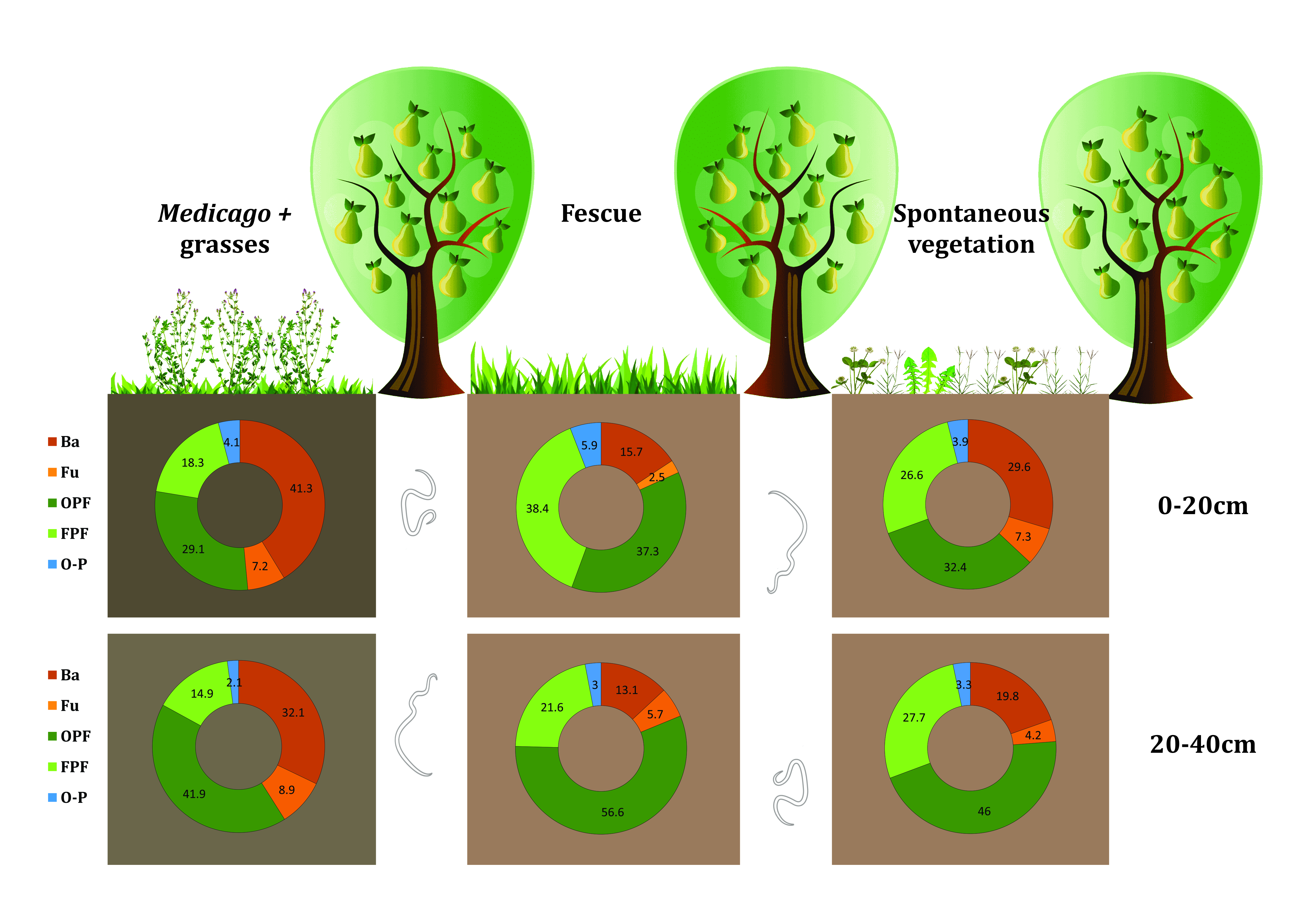Cover crops in pear (Pyrus communis) orchards: effects on soil nematode assemblage
DOI:
https://doi.org/10.48162/rev.39.111Palabras clave:
grupos tróficos de nematodos, red trófica del suelo, huella metabólica, propiedades físico-químicas del suelo, peralResumen
 Long-term vegetation cover can affect soil organic carbon content and carbon flow within the soil food web. Nematode trophic structure and soil properties were evaluated in pear rows (intra) maintained without weeds applying herbicide and in the inter-rows (between rows) covered with: Medicago+grasses (MG), fescue or spontaneous vegetation. Soil samples were taken at 0-20 and 20-40 cm depths from 2012 to 2014. Nematode assemblage was different in each inter-row and row, mainly in the topsoil. The inter-rows were reservoirs of omnivores-predators. The MG inter-row promoted the highest accumulation of organic carbon, total N and exchangeable K in the soil. The enrichment index was related to the quantity of dry matter produced by cover crops with the highest index observed in MG. Nematode biomass showed a positive correlation with intra and inter-rows soil organic carbon. Carbon flow through bacterivores prevailed in intra-rows, while bacterivores or herbivores canalized the inter-rows.
Long-term vegetation cover can affect soil organic carbon content and carbon flow within the soil food web. Nematode trophic structure and soil properties were evaluated in pear rows (intra) maintained without weeds applying herbicide and in the inter-rows (between rows) covered with: Medicago+grasses (MG), fescue or spontaneous vegetation. Soil samples were taken at 0-20 and 20-40 cm depths from 2012 to 2014. Nematode assemblage was different in each inter-row and row, mainly in the topsoil. The inter-rows were reservoirs of omnivores-predators. The MG inter-row promoted the highest accumulation of organic carbon, total N and exchangeable K in the soil. The enrichment index was related to the quantity of dry matter produced by cover crops with the highest index observed in MG. Nematode biomass showed a positive correlation with intra and inter-rows soil organic carbon. Carbon flow through bacterivores prevailed in intra-rows, while bacterivores or herbivores canalized the inter-rows.
Highlights:
- Each cover crop (Medicago+grasses, spontaneous vegetation and fescue) was associated with a different nematode assemblage, mainly in the topsoil.
- Omnivores-predators were higher in the inter-row than its associated row.
- Nematode Biomass showed a positive correlation with the content of SOC in the row and in the inter-row.
- Soil energy channels revealed higher carbon flow within the soil food web under Medicago+grasses and spontaneous vegetation than under fescue.
Descargas

Descargas
Publicado
Cómo citar
Número
Sección
Licencia
Derechos de autor 2018 Revista de la Facultad de Ciencias Agrarias UNCuyo

Esta obra está bajo una licencia internacional Creative Commons Reconocimiento-NoComercial-CompartirIgual 3.0.
Aquellos autores/as que tengan publicaciones con esta revista, aceptan las Políticas Editoriales.










.jpg)




